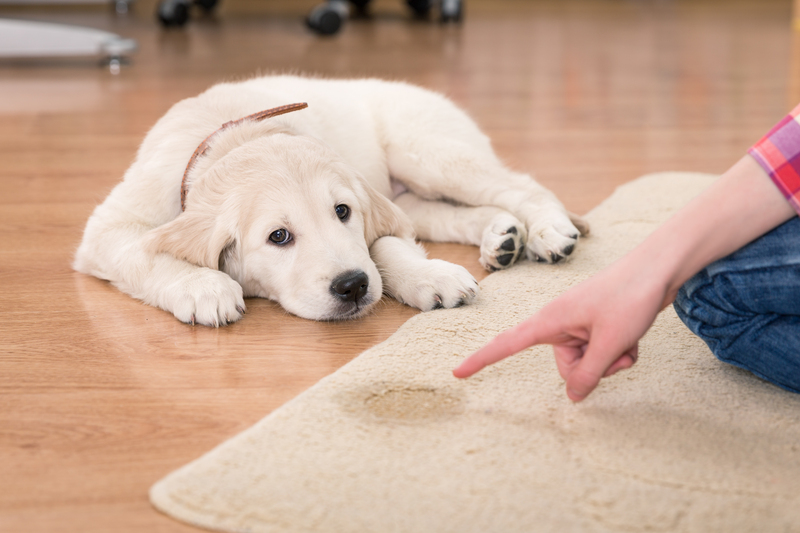Make Old Upholstery Look New
Posted on 10/05/2025
Upholstered furniture can add elegance and comfort to your home, but over time, fabric and padding can wear out, collect stains, or simply become outdated. Fortunately, you don't have to spend a fortune to keep your furniture looking new. With a little effort and some basic materials, you can restore your old upholstery to its former glory. Here's a comprehensive guide to help you breathe new life into your furniture.
Assessing the Condition
Before diving into the restoration process, it's crucial to assess the condition of your upholstered furniture. Examine the fabric for wear and tear, stains, and odors. Also, check the frame for any signs of damage. If the frame is cracked or broken, repairing it should be your first priority. For minor wear and tear, the fix might be simple, but substantial damages may require professional attention.

Gathering Supplies
Once you've assessed your furniture, gather the necessary supplies. Common materials and tools include:
- Fabric cleaner or upholstery shampoo
- Soft brushes and sponges
- Vacuum cleaner with upholstery attachment
- Needle and thread or a sewing machine
- Staple gun and staples
- New upholstery fabric (if reupholstering)
- Foam padding or batting
- Tack remover or pliers
Cleaning the Upholstery
The first step to making old upholstery look new is to clean it thoroughly. Vacuum the surface to remove loose dirt and debris, paying special attention to crevices and seams. For a deeper clean, a fabric cleaner or upholstery shampoo can be used. Follow the manufacturer's directions carefully:
- Spot Test: Always spot-test a small, hidden area first to ensure that the cleaner doesn't discolor the fabric.
- Application: Apply the cleaner with a soft brush or sponge, working in small sections. Use gentle, circular motions to avoid damaging the fabric fibers.
- Rinse and Dry: Wipe away any excess cleaner with a damp cloth and allow the fabric to dry completely before proceeding.
Repairing and Mending
Minor tears, loose seams, and worn spots can often be mended with a needle and thread. If your sewing skills are lacking, fabric glue can be an alternative for small repairs. For significant tears, patches of matching or complementary fabric can be used. If the padding has lost its shape or resilience, consider replacing it with new foam or batting. Simply remove the old padding and cut new foam to size, securing it with adhesive or staples as needed.
Reupholstering
If the fabric is too worn or stained to be salvaged, reupholstering may be the best option. While this process can be labor-intensive, it's also incredibly rewarding. Here's a step-by-step guide:
Step 1: Remove Old Fabric
Use a tack remover or pliers to carefully remove the staples or tacks holding the old fabric in place. Be sure to save the old fabric pieces, as they can serve as a pattern for cutting your new fabric.
Step 2: Measure and Cut New Fabric
Lay the old fabric pieces on your new material and trace around them, adding a few extra inches for seam allowance. Cut the new fabric carefully, ensuring it matches the shape and size of the old pieces.
Step 3: Attach New Fabric
Place the new fabric over the padded frame and begin stapling it in place. Start with the center of each side, working your way towards the corners. Pull the fabric taut, but not too tight, to avoid creating puckers or wrinkles. Fold the fabric neatly at the corners and secure with additional staples.
Step 4: Finishing Touches
Once the new fabric is in place, trim any excess material and add any decorative elements, such as buttons or trim. If your furniture has removable cushions, consider making new covers or adding zippers for easy washing.

Maintaining Your Restored Upholstery
To keep your newly restored upholstery looking fresh, regular maintenance is essential. Vacuum your furniture weekly to remove dust and debris. Rotate and fluff cushions to ensure even wear. If spills occur, address them immediately with a suitable fabric cleaner, following the same spot-test precautions as before.
Conclusion
Restoring old upholstery can be a rewarding and cost-effective way to rejuvenate your living space. While it may require some effort and patience, the end result is well worth it. By assessing the condition of your furniture, gathering the right supplies, and following the appropriate steps for cleaning, mending, and reupholstering, you can make old upholstery look new again. Regular maintenance will help preserve your hard work, allowing you to enjoy your revitalized furniture for years to come.
Whether you're a DIY enthusiast or a novice, taking on an upholstery project can be a fulfilling experience that adds a personal touch to your home. So roll up your sleeves and get started on making your old upholstery look brand new!




